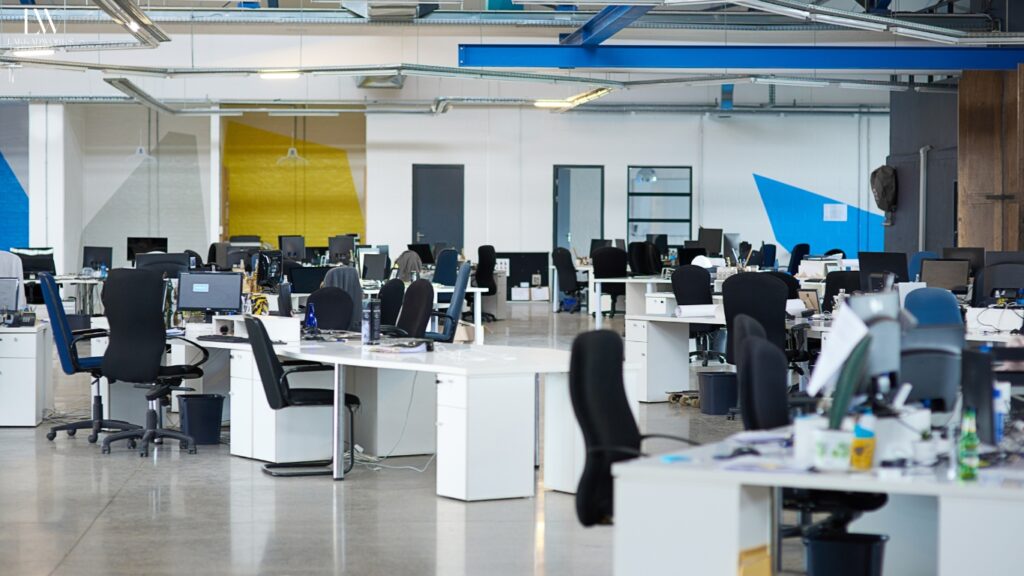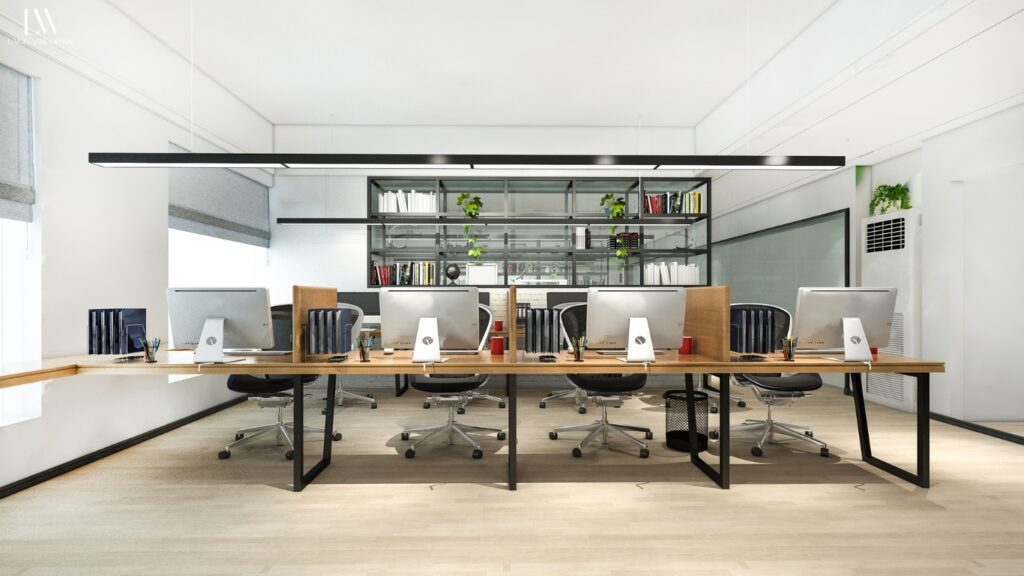Need a Design Superhero?
Connect with our Expert Interior Designers! hello.你好もしもし.hola.
GURGAON
Find Us
C2- 23A 3RD FLOOR, Block C2,
Sushant Lok Phase I, Sector 43,
Gurugram, Haryana 122002
Need a Design Superhero?
Connect with our Expert Interior Designers! hello.你好もしもし.hola.
GURGAON
Find Us
C2- 23A 3RD FLOOR, Block C2,
Sushant Lok Phase I, Sector 43,
Gurugram, Haryana 122002
In today’s fast-paced business world, the design of your office space plays a crucial role in shaping the productivity, creativity, and overall well-being of your employees. At Lakkadworks, we believe that an office is more than just a place to work—it’s a reflection of your company’s culture, values, and vision. Whether you’re designing a new office or revamping an existing one, creating an inspiring office interior design is essential to fostering a positive work environment.
In this comprehensive guide, we’ll explore how to make office interior design that not only meets functional needs but also inspires creativity and collaboration. From creative office interior design ideas to tips for large office interior design, we’ll cover everything you need to know to transform your workspace into a hub of innovation and productivity.

Before diving into the specifics of office interior design, it’s important to understand why it matters. The design of your office can have a significant impact on employee morale, productivity, and even client perceptions. A well-designed office can:

The first step in creating an inspiring office interior design is to define your goals. What do you want to achieve with your office design? Are you looking to create a collaborative environment, a quiet and focused space, or a mix of both? Consider the following questions:
Once you’ve defined your goals, you can start planning the layout, furniture, and decor that will bring your vision to life.

The layout of your office is the foundation of your design. It determines how people move through the space, interact with each other, and use the available resources. Here are some key considerations for planning your office layout:

Furniture is a key element of office interior design. It not only affects the aesthetics of your space but also impacts the comfort and productivity of your employees. Here are some tips for choosing the right furniture:

Lighting plays a crucial role in office interior design. It affects mood, energy levels, and overall well-being. Here are some lighting tips to consider:
Read Our Previous Blog on: The Ultimate Guide to Wardrobe Design

The colors you choose for your office can have a significant impact on the mood and behavior of your employees. Here’s how to use color psychology in your office interior design:

Biophilic design is the practice of incorporating natural elements into the built environment. It has been shown to reduce stress, improve well-being, and boost creativity. Here are some ways to bring nature into your office:

Collaboration is essential for innovation and problem-solving. Designing spaces that encourage teamwork can lead to more creative and effective solutions. Here are some ideas for creating collaborative spaces:

Large office interior design comes with its own set of challenges and opportunities. Here are some tips for designing a large office space:

While functionality and aesthetics are important, it’s equally important to add a human touch to your office design. Personalizing the space can make employees feel more connected and valued. Here are some ideas:

Designing an office that inspires creativity, collaboration, and productivity is no small feat, but with careful planning and thoughtful execution, it’s entirely achievable. At Lakkadworks, we specialize in creating office interior designs that not only look great but also enhance the way people work.
Whether you’re designing a small creative office or a large corporate space, the key is to focus on the needs of your employees, reflect your brand identity, and create a space that fosters well-being and innovation. By following the tips and ideas outlined in this guide, you can transform your office into a place where your team thrives and your business succeeds.
Remember, your office is more than just a workspace—it’s a reflection of who you are as a company. Make it a space that inspires and empowers everyone who walks through the door.

At Lakkadworks, we are passionate about creating office spaces that inspire and empower. With years of experience in office interior design, we specialize in crafting environments that reflect your brand, enhance productivity, and foster creativity. Whether you’re looking for creative office interior design ideas or need help with large office interior design, our team is here to bring your vision to life. Contact us today to learn more about how we can transform your workspace.
Adding {{itemName}} to cart
Added {{itemName}} to cart